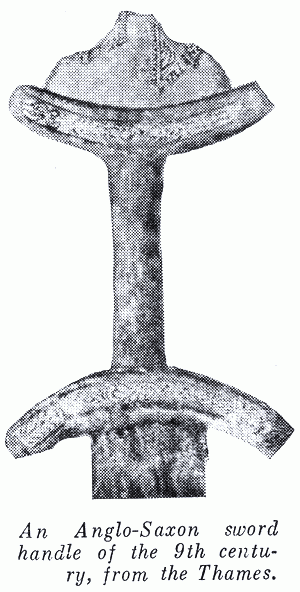Danish Raids on England
Category: 09th centuryThe Danes were of the same Germanic race as the Anglo-Saxons themselves and they came from the same part of the Continent. But unlike the Anglo-Saxons whose way of life had changed greatly ever since they came to Britain, the Danes still lived in tribes. They were still pagans. They worshipped Woden, the god of War, Thor, the Hammer god, and the other old gods whom the Anglo-Saxons had forgotten. At the end of the 8th century they began to attack Britain just as the Anglo-Saxons had done themselves four centuries earlier.
 The Danes were well armed—with sword, spear, dagger, battle-axe and bow. Their ships were sailing-boats but they were also provided with oars. The sails were often striped red and blue and green. At the prow of the ship there was usually a carved dragon’s head which rose high out of water. The Danes were bold and skilful seamen. On their long, narrow, shallow ships they could sail or row far up a river into the heart of the country in search of plunder.
The Danes were well armed—with sword, spear, dagger, battle-axe and bow. Their ships were sailing-boats but they were also provided with oars. The sails were often striped red and blue and green. At the prow of the ship there was usually a carved dragon’s head which rose high out of water. The Danes were bold and skilful seamen. On their long, narrow, shallow ships they could sail or row far up a river into the heart of the country in search of plunder.
In 793 the Danes carried out their first raids on Britain. Their earliest raids were for plunder only. The raiders came in three or four ships, each with as many as a hundred men on board. They sailed along the coasts of the country and up the rivers thus plundering r.ot only the coasts but the midlands as well. They came in spring and summer, and when the ship was loaded with plunder they returned home for the winter. Every year they went to different places— rarely to the same place twice. Thus all the Anglo-Saxon kingdoms faced the same dangerous enemy.
In later years large Danish fleets (more than three hundred ships) brought large armies to conquer and settle in the new lands. They did not go home for the winter but they made large camps, well-guarded, to which they brought their booty. From these camps the Danes would make many raids upon the villages in the area. Thus began the fourth conquest of Britain. Once more the cattle was driven off, the houses burnt, churches and monasteries plundered and the people slain.
The Danish raids were successful because the kingdom of England had neither a regular army nor a fleet in the North Sea to meet them. There were no coastguards to watch the coast of the island and this made it possible for the raiders to appear quite unexpectedly. Besides, there were very few roads, and large parts of the country were covered with pathless forests or swamps. It took several weeks sometimes before anyone could reach a settlement from where a messenger could be sent to the king, or to the nearest great and powerful noble, to ask for help. Help was a long time in coming. It would take the king or the noble another few weeks to get his fighting men together and go and fight against the enemy.
Northumbria and East Anglia suffered most from the Danish raids. The Danes seized the ancient city of York and then all of Yorkshire. Here is what a chronicler wrote about the conquest of Northumbria: “The army raided here and there and filled every place with bloodshed and sorrow. Far and wide it destroyed the churches and monasteries with the fire and sword. When it departed from a place, it left nothing standing but roofless walls. So great was the destruction that at the present day one can hardly see anything left of those places, nor any sign of their former greatness.” Soon after, the Danes conquered East Anglia and slew King Edmund. (The Christians considered him a martyr, and a monastery was built where he was buried and the town still bears his name — Bury St. Edmunds.)
Then large organized bands of Danes swept right over to the midlands. At last all England north of the Thames, that is, Northumbria, Mercia and East Anglia, was in their hands.
Only Wessex was left to face the enemy. Before the Danes conquered the North, they had made an attack on Wessex, but in 835 King Egbert defeated them. In the reign of Egbert’s son the Danes sailed up the Thames and captured London. Thus the Danes came into conflict with the strongest of all the Anglo-Saxon kingdoms, Wessex.
